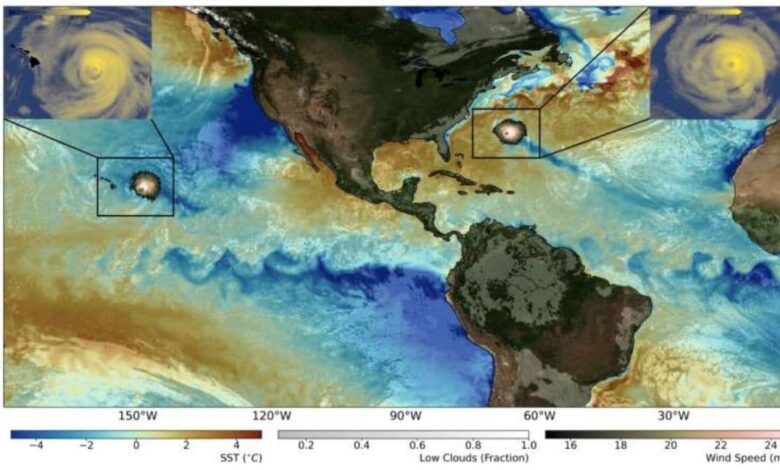Climate Model Reveals Regional Global Warming Impacts

Advanced Climate Model Predicts Regional Warming Extremes
A groundbreaking new climate model is providing unprecedented detail on the regional impacts of global warming, offering insights crucial for adaptation and disaster preparedness. This model, leveraging high-powered supercomputing, paints a picture of a future with more extreme regional events, including significant Arctic Ocean warming and intensified rainfall in vulnerable regions.
Key Findings of the Climate Model
The study, published in Earth System Dynamics, was conducted by researchers from the IBS Centre for Climate Physics in South Korea and the Alfred Wegener Institute in Germany. The team utilized the AWI-CM3 Earth system model, running it on South Korea’s advanced supercomputers to simulate climate conditions at a remarkably high resolution (9 km atmospheric and 4–25 km ocean resolution). This level of detail surpasses the resolution of models commonly used by the IPCC, which typically operate at around 100 km.
Regional Temperature Variations
The model forecasts significant temperature variations across different regions:
- High mountain ranges, such as the Hindu Kush and Andes, are expected to experience warming rates 45%–60% higher than the global average.
- Siberian and Canadian Arctic regions could see temperature increases of approximately 2°C with only a 1°C global average increase.
Increased Climate Fluctuations
Researchers also anticipate an increase in climate fluctuations, including:
- More intense El Niño and La Niña events.
- A faster and more impactful Madden Julian Oscillation (MJO).
These fluctuations could lead to an increased frequency of heavy rainfall events (rainfall > 50 mm/day), potentially triggering floods and landslides in densely populated and environmentally sensitive areas.
Implications for Disaster Preparedness and Infrastructure
The detailed regional projections offered by this climate model are invaluable for policymakers and planners. The researchers have developed an interactive tool, presenting climate projections as data overlaid on Google Earth, enabling users to visualize the potential impacts in specific locations. This tool can be used to:
- Inform the development of solar and wind energy infrastructure.
- Improve disaster response strategies.
- Enhance water management plans.
Regional Impact Details
The high-resolution model allows for the study of region-specific patterns that were previously undetectable. This includes:
- Local conditions on islands.
- Specific types of oceanfront rain.
- The formation of turbulence in ocean eddies.
These insights are especially crucial for vulnerable regions like small island nations and mountain communities, which are already experiencing the effects of climate change.
The Importance of High-Resolution Climate Models
The advancement of climate modeling through supercomputing power is essential for understanding and preparing for the impacts of global warming. By providing detailed regional projections, these models empower decision-makers to implement effective adaptation strategies and build resilience in the face of a changing climate.
| Region | Predicted Impact |
|---|---|
| Arctic | Significant warming, potential for ice melt |
| Mountain Ranges | Accelerated warming compared to global average |
| Coastal Areas | Changes in rainfall patterns and ocean conditions |
Adapting to a Changing Climate
The detailed insights from this new climate model underscore the urgent need for proactive adaptation measures. By understanding the specific regional impacts of global warming, communities and governments can better prepare for the challenges ahead and build a more sustainable future.
Specific Actions to Consider:
- Infrastructure Planning: Design infrastructure that is resilient to extreme weather events, such as floods and heatwaves.
- Water Management: Implement strategies for water conservation and efficient water use, especially in regions facing increased drought risk.
- Disaster Preparedness: Develop comprehensive disaster preparedness plans that address the specific risks faced by each region.
The Role of Technology
Technological advancements, such as the development of high-resolution climate models and interactive data visualization tools, are playing a crucial role in our understanding of climate change. By leveraging these technologies, we can gain valuable insights into the potential impacts of global warming and develop effective strategies for mitigation and adaptation.
Call to Action
The findings of this new climate model serve as a powerful reminder of the urgent need to address climate change. By taking proactive steps to reduce greenhouse gas emissions and adapt to the changing climate, we can protect our communities and build a more sustainable future for all.




